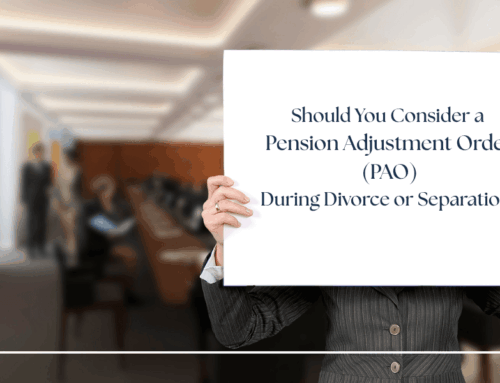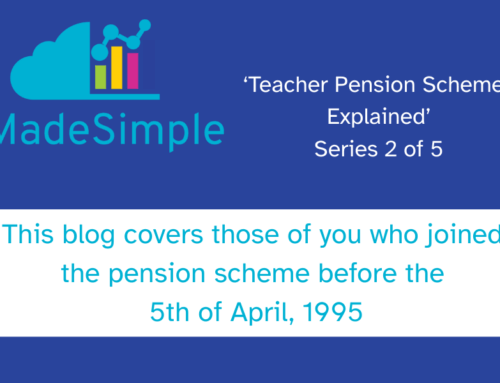
Public Sector Pension Schemes – Main Benefits
Public sector pensions are occupational pension schemes set up by the Government for employees in the public service, local authorities, or semi-state companies. The majority of these pensions are defined benefit schemes. This means that your pension is based on your pay/salary at retirement (for pre 2013 entrants) or an average of your pay while you were in the scheme (for post 2013 entrants) and the number of years you have been in the scheme.
As you may know, the public sector pension schemes in Ireland can be very confusing. That’s why we’ve decided to look at each specific scheme and give you the most important things to note for you depending on when you began service.
Public Sector Pensions before 5th April 1995
Public sector entrants before 5th April 1995 ‘the old pension scheme’ are independent of the state social benefits and pension. Members of this scheme pay a reduced rate of PRSI – Shown as “Class D” on payslips. However, they will not get the Contributory State Pension. They will receive half of their final salary as a pension from their public sector employer.
NRA – National Retirement Age,
TFLS – Tax Free Lump Sum,
IHER – Ill Health Early Retirement
Overview of Basic Benefits of Pre 1995 Scheme
- NRA 60, but they can leave at 50 on Cost Neutral Early Retirement, compulsory retirement age of 70. Teachers can retire from 55 years of age, without an actuarial reduction, if they have 35 years’ service including training years.
- Annual Pension = Years Service x Final Salary x 1/80
- TFLS = Years Service x Final Salary x 3/80
- Sick pay – 92 days full pay in any year, 91 days half-pay in any year, subject to a maximum of 183 days in any 4-year period.
- IHER calculated on final remuneration and service to end of sick leave plus additional years – less than 20, brought up to 20 years, over 20 years, then 6.67 years added.
- Death Gratuity (1-1.5 x Pensionable Salary); Spouse’s Pension (50% of the Pension that would be payable to member at NRA); Child Pension (1/6 (to a max of 3) payable to age16, or 22 if in full-time education).
Note: One of the services we provide at MadeSimple is securing the State Contributory pension for those who joined pre-1995 and otherwise would not have qualified for it. This has increased our clients’ annual pension benefits by up to €10,000 per annum.
Public Sector Pensions after 6th April 1995
The rules have been tightened over the years with the rising life expectancy rate and increasing liability of the scheme. For those who joined the public sector from 1995 on, the occupational pension is integrated with the State pension. “Integrated” with social welfare, so pension is less, but it should end up being the same when Contributory State Pension (CSP) is paid.
Public Servants employed during this time pay the “A Rate” of PRSI (full PRSI contributions). Therefore, they get the Contributory State Pension based on employment. The relevant department will usually “supplement” the shortfall until Contributory State Pension kicks in (there are conditions around if and when the supplementary pension will be paid).
6th April 1995 to 31st March 2004 Entrants
- NRA 60, but can leave at 50 on Cost Neutral Early Retirement, compulsory retirement age 70. 35/55 Rule for teachers apply similar to the previous group.
- Annual Pension = Years Service x Final Salary x 1/80
- TFLS = Years Service x Final Salary x 3/80
- Sick pay – 92 days full pay in any year, 91 days half-pay in any year, subject to a maximum of 183 days in any 4 year period.
- IHER calculated on final remuneration and service to end of sick leave plus additional years – less than 20, brought up to 20 years, over 20 years, then 6.67 years added.
- Death Gratuity (1-1.5 x Pensionable Salary); Spouse’s Pension (50% of the Pension that would be payable to member at NRA); Child Pension (1/6 (to a max of 3) payable to age16, or 22 if in full-time education).
1st April 2004 to 31st Dec 2012 Entrants
- NRA 65, but they can leave at 55 on Cost Neutral Early Retirement, no compulsory retirement age. No 35/55 Rule for teachers in this group.
- Annual Pension = Years Service x Final Salary x 1/80
- TFLS = Years Service x Final Salary x 3/80
- Sick pay – 92 days full pay in any year, 91 days half-pay in any year, subject to a maximum of 183 days in any 4 year period.
- IHER calculated on final remuneration and service to end of sick leave plus additional years – less than 20, brought up to 20 years, over 20 years, then 6.67 years added.
- Death Gratuity (1-1.5 x Pensionable Salary); Spouse’s Pension (50% of the Pension that would be payable to member at NRA); Child Pension (1/6 (to a max of 3) payable to age16, or 22 if in full-time education).
Entrants after 1st January 2013 ‘Single Public Service Pension Scheme’
- NRA is State Pension Age, but can leave at 55 on Cost Neutral Early Retirement (CNER), compulsory retirement at 70.
- Annual Pension = Pension accrued per annum at 0.58/1.25% annual salary
- TFLS = Lump Sum Accrued at 3.75% of salary per annum
- Sick pay – 92 days full pay in any year, 91 days half-pay in any year, subject to a maximum of 183 days in any 4-year period.
- IHER calculated as pension earned to date, plus 50% of future accrual to NRA (capped at 10 years forward).
- Death Gratuity (2 x Pensionable Income); Spouse’s Pension (50% of the Ill Health pension accrued at time of death); Child Pension (remaining 50% of pension payable to children to age 16, or 22 if in full-time education, 1/6th if one child).
Understanding Your Benefits
Although public sector benefits appear easy to list, issues often arise in the calculation stage. We have met very few public sector employees who are clear what their after-tax take home pay in retirement will be, why they pay into AVCs, and what they would do with them at retirement.
What causes problems in calculations?
- Years worked but not paid into the pension/ refunds received (i.e. subbing, temporary contracts)
- Breaks in service or part-time work
- Maternity leave, unpaid sick leave, or sabbaticals
- Professional added years
The basis of good financial planning is getting an accurate picture of your benefits now and at retirement. MadeSimple advisors specialise in these calculations and can give you an accurate estimate even without a statement from the Department/ETB.
The next stage is to plan how these gaps in service can be filled, so that your pension doesn’t take a hit. This is where AVCs, purchasing of Notional Service or PCW years become very important. However, each of these options needs to be carefully evaluated for its suitability in your specific situation.
How can you retire early?
Early retirement is a key financial goal for many public sector employees we speak to. Especially, with the Single Scheme members (entered employment after 1st Jan 2013), they are looking at retirement in their late 60s. Most teachers, for example, do not see themselves teaching until that age and seek to explore options for early retirement. Furthermore, some employees may have breaks in service or missing years which may reduce their pension.
Although employees would like to retire early, they do not want to be short of cash in retirement. The main issues that can arise from early retirement are shortages in your Annual Pension and Tax-Free Lump Sum. These shortages will depend on your pension scheme, years of service at retirement, and how many years before your NRA you decide to retire. There are many ways to solve these shortfalls for example the purchase of notional service. This can be very useful for people who have job shared or don’t have 35 years service.
As you can see retiring early can be a very complicated process. Luckily, we have a team of expert public sector retirement advisors ready to help! If you’re thinking of retiring early, why not book a review today?
What Does the Financial Planning Review Cover?
Step 1
You – Complete a short online application form
Step 2
We – Generate your personal report that outlines your current benefits.
Step 3
Together – We schedule a review online (we use Zoom, or a platform you may suggest) or over the phone to discuss what options are available to you.
After we complete the review, many employees are delighted to have their options regarding pension planning, salary protection, life protection, savings and investments explained to them so clearly. Not only that, but we can also set up policies for you all online in a very fast and efficient manner.
Get your complimentary, personalised review today! You have nothing to lose!





